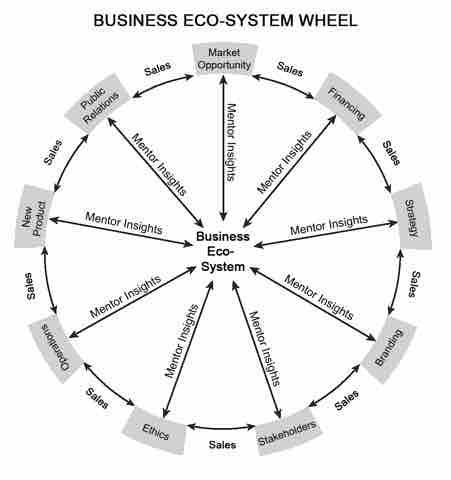Personal Selling
Selling, the art of persuasion, is defined as a one-on-one interaction whereby a tangible or intangible item of value is exchanged for a different item, usually with money in an amount of equal or greater value of the item being sold. Selling is part of the promotional mix. It is systematic, repetitive, and measurable. When properly analyzed, sales data will offer objections to overcome and help to predict sales patterns and projections.

Personal Selling
The Marketing Hub describes relationships in the promotional mix.
Understanding Customer Needs
To be successful in personal sales, the salesperson must understand how to sell to the needs of a customer. Psychologist Abraham Maslow created a Hierarchy of Needs that offers useful information for personal selling. Maslow outlined five levels of need and as each level is fulfilled, a person progresses to the next one. At the most basic level, physiological and safety needs must be met with food, clothing, and shelter, so a product that meets these basic needs has potential to sell well. However, the basic human need to consume food and liquids should not be confused with wanting a hamburger and a soft drink.
Mid-level hierarchy needs are social in nature and include self-respect, self-esteem, and the esteem of others. They create a powerful internal motivation and drive demand for status-oriented products. Those selling luxury goods cater to esteem needs. When customers flaunt wealth by buying expensive products it is referred to as conspicuous consumption or luxury badging.
The Mechanics of Personal Selling
Sales capturing is defined as bringing in and closing deals. A successful personal seller must utilize aggressive sales technics that influence and control the process, presenting it as a mutually beneficial, interpersonal exchange of goods or services for equitable value.
At the core of personal selling is the human exchange between buyer and seller. The interaction is based upon fulfilling a need or desire with the product or service that is offered and paid for. A systematic approach to successful personal selling includes good prospecting, the salesperson's in-depth knowledge of the product, and the qualification of potential buyers. Good prospects are predisposed and well-suited to the product or service being offered, allowing the salesperson to facilitate the exchange of value and to guide them through the process with a minimum amount of objections or resistance.
Selling Strategies
The personal selling process has eight steps: The first is prospecting, which involves finding and identifying buyers who are most likely to buy the product or service. There are numerous ways to qualify leads: cold calls by telephone, email, through social networking, or personal referrals. The word "cold" refers to fact that the person receiving the call is not expecting it or has not specifically asked to be contacted by a sales person.
Pre-approach is the next step used to prepare for the presentation. It consists of customer research and goal planning. The next step is the approach or initial meeting between the salesperson and the customer. Following the approach is the need assessment step when the customer's need for the product is evaluated by the salesperson. During this step, questions are asked to identify the current situation, the source and impact of any problems, the benefits of the product as part of the solution, and the buyer's level of interest.
Once need is established, the salesperson is ready to present or demonstrate the product. This step is designed to grab the buyer's attention, ignite interest, create desire, and inspire action (AIDA) by showing the product's advantages and benefits. At this point, customer objections involving price, value, adequacy, the commitment to buy, or other issues are addressed. Successful salespeople anticipate objections and respond to them respectfully before advancing to gaining commitment, which involves closing the deal or making the sale.
Salespeople use different types of methods to close deals such as the alternative close, the assumptive close, the summary close, or the special-offer close. The last and most crucial step in the process is follow up to ensure customer satisfaction and help establish a relationship.
Other sales strategies include direct sales conducted outside of a retail location, guaranteed, needs-based, persuasive, hard, heart, relationship, target account, priced-based, and solution selling.
The Relationship between Sales and Marketing
Marketing impacts personal selling and improves the selling environment by increasing exposure to potential customers. Marketing campaigns seek to drive potential customers towards sales people.
Though quite different in nature, marketing and sales departments handle similar concepts. It is essential for them to maintain a good working relationship based upon clear and concise communication and interaction.